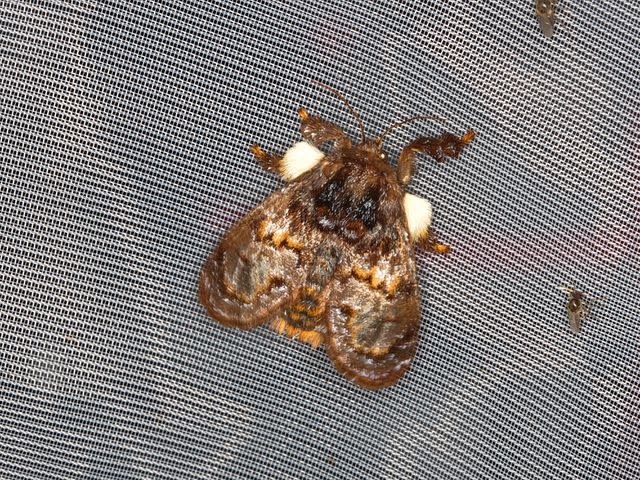10 Remarkable Types of Caterpillars and What They Become
Ever wondered what caterpillars look like before they turn into butterflies?
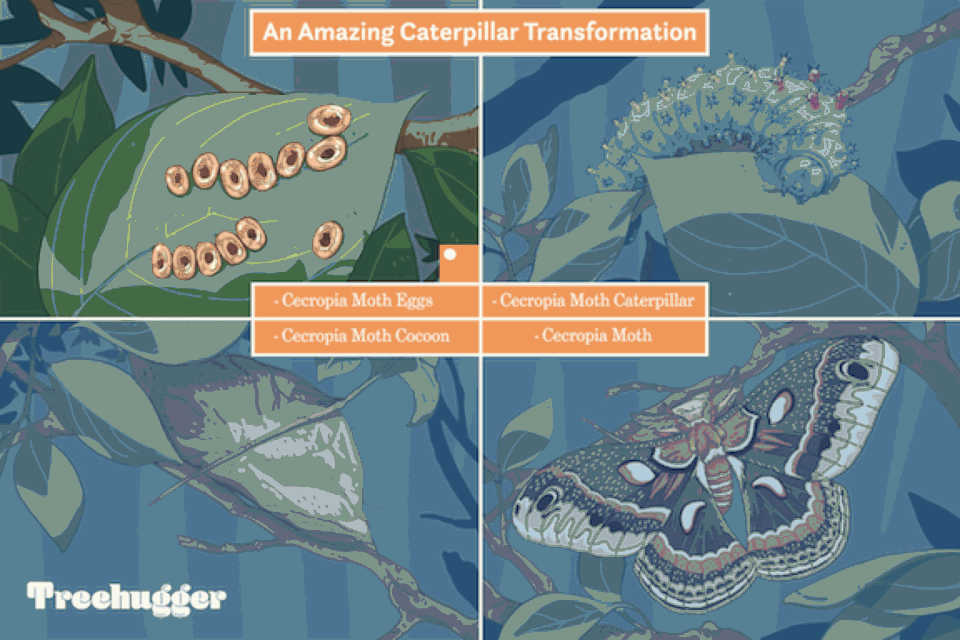
Treehugger / Alex Dos Diaz
It's hard not to be captivated by the fluttery, fragile beauty of butterflies and moths. But the caterpillars they start from—with a variety of colors, shapes, markings, and armor—can be equally captivating. What caterpillars all have in common is the incredible metamorphosis they undergo on their journey from egg to butterfly or moth.
Caterpillars represent just one stage of this transformational trek—the larval stage—during which their main purpose is to eat and grow. They grow so much during their brief lives that they typically shed their skin several times, often revamping their appearance from one instar phase to the next. "Instar" refers to the developmental stage of an arthropod between its various moults.
Afterward, butterfly caterpillars molt one final time into a hard chrysalis to begin their magical makeover, and moth caterpillars (with a few exceptions) wrap themselves in a silky cocoon.
Whether you love identifying caterpillars in the wild or determining friend from foe in your garden, here's a before-and-after look at some of Mother Nature's most notable species.
Spicebush Swallowtail Butterfly Caterpillar
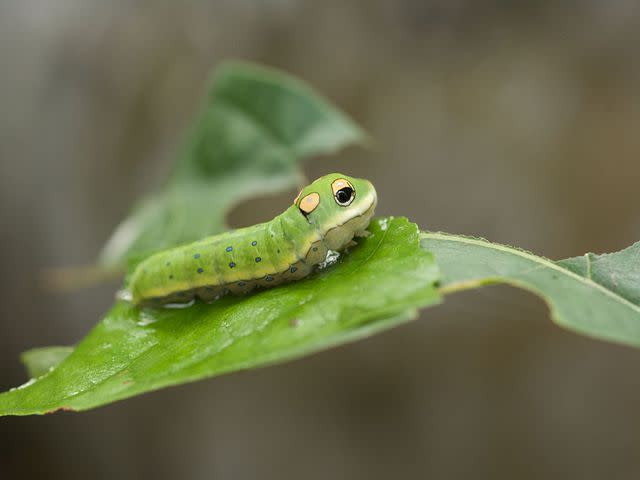
Ryan Hagerty / Wikimedia Commons / Public Domain
At first glance, these stunning green caterpillars resemble small snakes or tree frogs—a clever disguise designed to ward off predators. Most extraordinary are the false tan eyespots ringed in black. They're not real eyes, but the level of detail in this mimicry is remarkable, including black pupils in the center complete with white highlights that resemble light reflections. If the "evil eye" fails to scare off predators, spicebush swallowtail caterpillars can break out their bright yellow retractable hornlike organs (called osmeteria) located behind their head, which bear a chemical repellent.
These arresting creatures—found throughout the eastern U.S.—hide in folded leaves during the day and venture out in the evening to feed on their foliage of choice, which includes red bay, sassafras, and spicebush. They morph into big, beautiful black-bodied butterflies that sport patches of blue and rows of light spots along their wing edges.
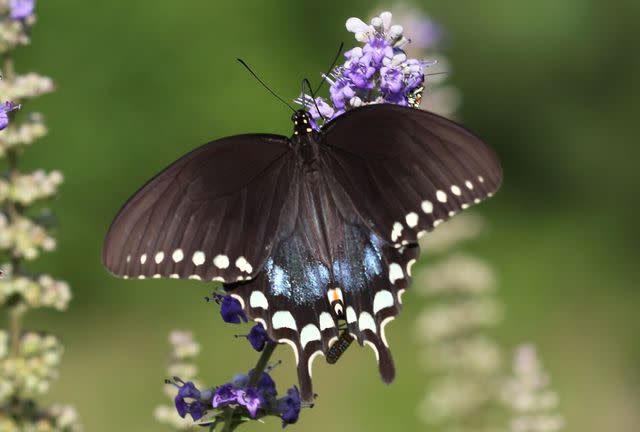
Hickory Horned Devil (Regal Moth) Caterpillar
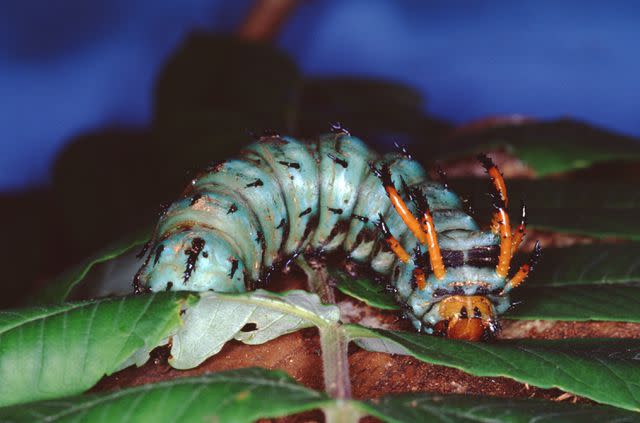
Weber / Getty Images
The hickory horned devil looks menacing, but it’s just a harmless giant caterpillar. One of the largest caterpillars in North America, hickory horned devils can grow to over five inches in length. Everything about them—from their startling turquoise-green bodies arrayed with black spikes to their prickly orange horns—can invoke fear in the uninitiated. Turns out, it's all a ruse.
These giants, found in eastern U.S. forests, are about as gentle as they come. After feasting on the leaves of hickory, ash, persimmon, sycamore, and walnut trees, they burrow a few inches into the ground in late summer. (They're one of the few moth caterpillars that don't spin cocoons.)
The following summer, they emerge as ravishing orange, gray, and cream-colored regal moths, with an impressive six-inch wingspan.
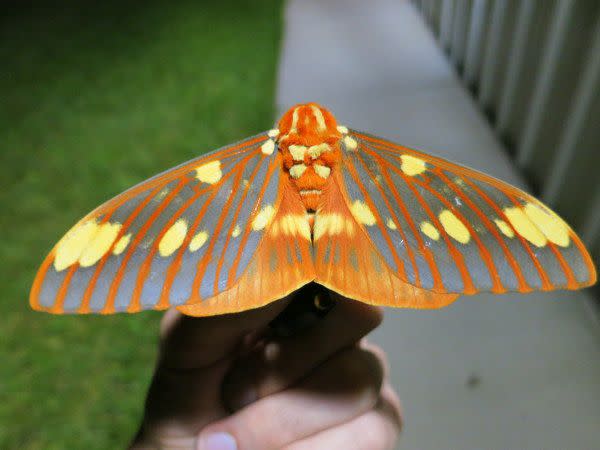
Monarch Butterfly Caterpillar
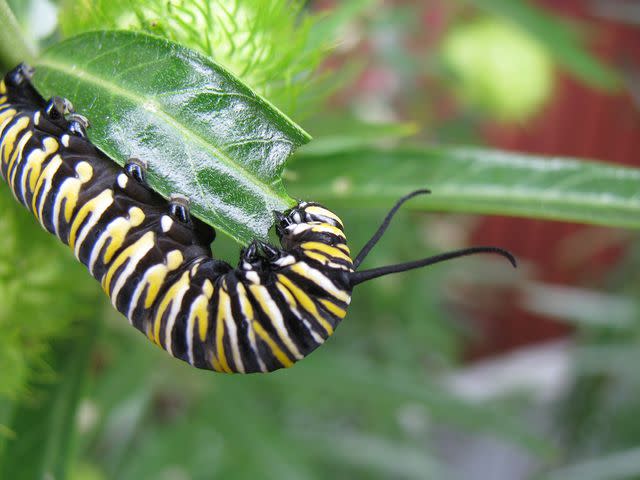
Lynda / Flickr / CC BY 2.0
Come spring, female monarchs begin laying their eggs exclusively on milkweed plants. Once hatched, these strikingly striped orange, black, and white caterpillars devour their nutrient-rich egg shell and begin gorging on milkweed leaves. In the process, they also ingest toxins called cardenolides that don't harm them but are poisonous to predator birds. Within two weeks they've bulked up to 3,000 times their original size.
After this food fest, mature caterpillars attach themselves to a leaf or stem, transform into a chrysalis, and emerge a few days later as the familiar orange-, black-, and white-winged beauties that are so beloved. Monarchs are found throughout North, Central, and South America, Australia, Western Europe, and India. Each fall, monarchs embark on a massive migration to their wintering grounds in Mexico and along the California coastline.
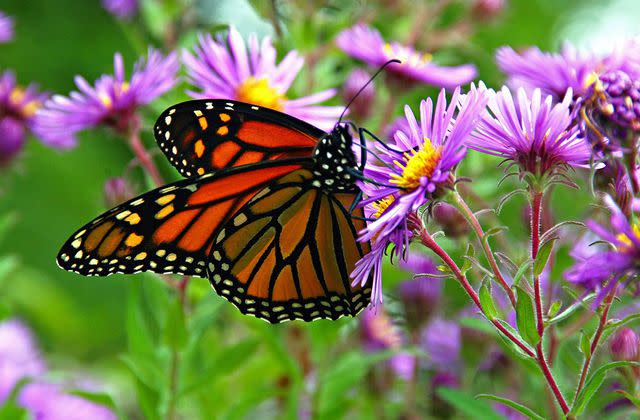
Puss (Southern Flannel Moth) Caterpillar
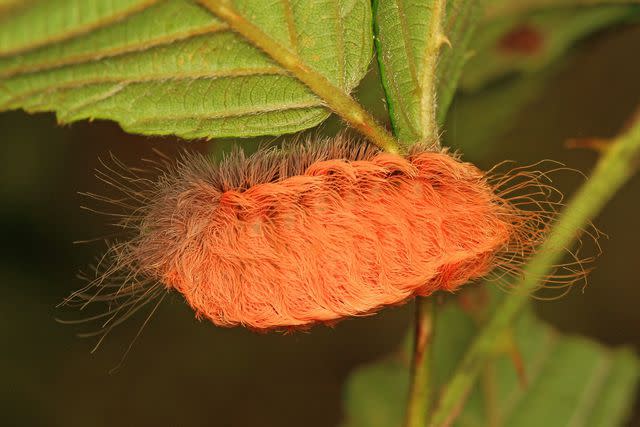
Judy Gallagher / Flickr / CC BY 2.0
You might be tempted to pet one of these fluff balls, but that would be a big mistake. The puss caterpillar is one of the most venomous in the U.S. Underneath that toupee-like fur are hidden toxic spines that stick to the skin. Just one touch can unleash excruciating pain far worse than a bee sting. Symptoms may include swelling, headaches, fever, nausea and vomiting, and even shock or respiratory distress. The more mature the caterpillar, the worse the sting.
Puss caterpillars eventually become Southern flannel moths with yellow, orange, and creamy fur on their wings, legs, and bodies. They hatch from cocoons that are extremely tough and may persist on trees long after the moth has emerged, even to the point of getting covered with lichens.
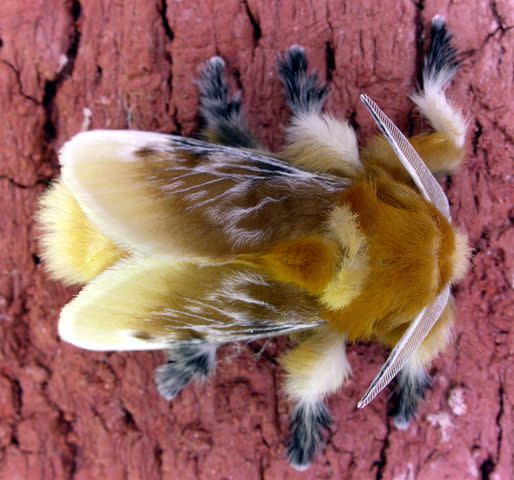
Zebra Longwing Butterfly Caterpillar
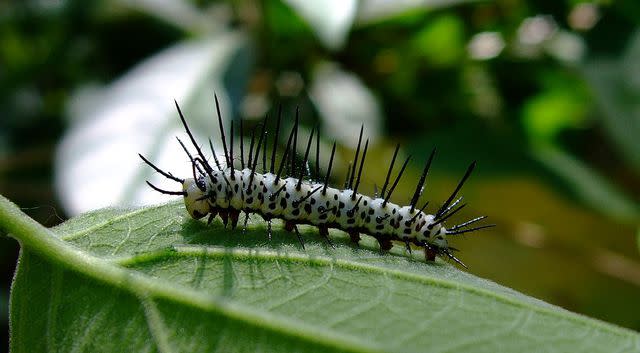
DeadEyeArrow / Wikimedia Commons / CC BY-SA 3.0
These formidable-looking caterpillars feed on the leaves of several species of passion flower (Passiflora). But this dietary preference isn't just about nutrition; it's also about predator protection. Passion flower contains toxic, bitter-tasting psychoactive alkaloids. By munching these plants, zebra longwing caterpillars become foul-tasting and toxic, too—an idea that's visually reinforced via their black spots and long black spines.
These imposing creatures are common throughout Central America, Mexico, Florida, and Texas and eventually transform into alluring butterflies known for their long, narrow wings adorned with black and pale yellow stripes.
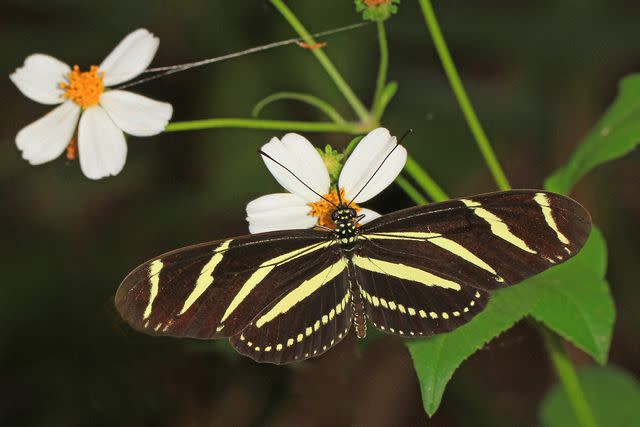
Saddleback Caterpillar Moth
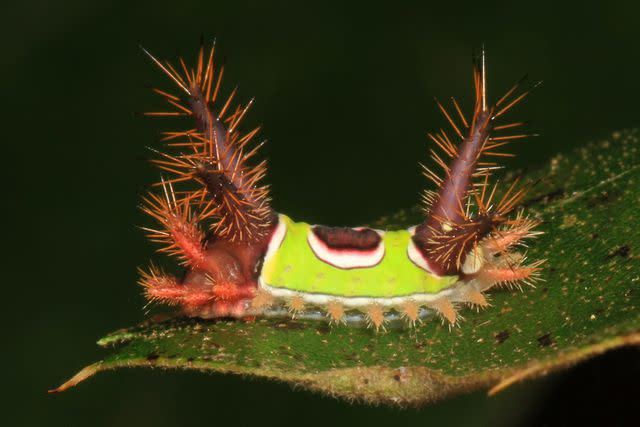
Judy Gallagher / Flickr / CC BY 2.0
It's not hard to see how this caterpillar got its name: It's all in the neon green "saddle" on its back, edged in white with a purplish-brown oval spot in the center. Vibrant colors are yet another way Mother Nature sends a warning. These crazy looking critters, found throughout the eastern U.S., Mexico, and Central America, may only be an inch long, but like puss caterpillars, they pack a walloping sting. Beware their four lobes of poisonous spines—two in front and two in back—as well as several smaller stinging protrusions lining their sides. Unlike the puss caterpillar, though, there's nothing inviting about giving this guy a friendly pat.
By comparison, at maturity, the fuzzy, chocolate brown saddleback caterpillar moth is as benign as it looks.
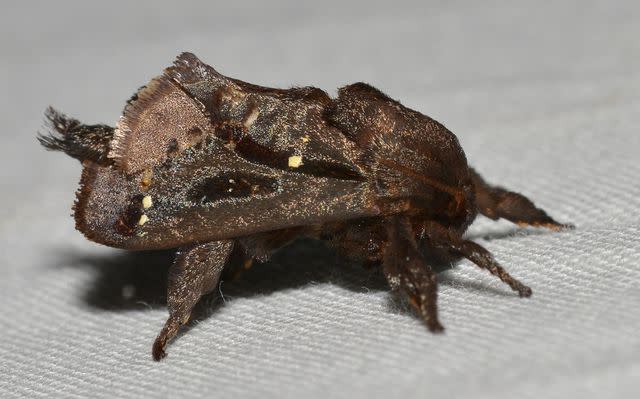
Owl Butterfly Caterpillar
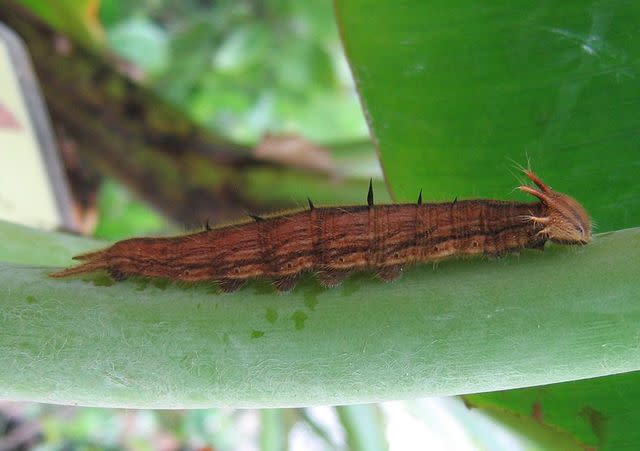
Harald Süpfle / Wikimedia Commons / CC BY-SA 2.5
Inhabitants of Central and South American rainforests, these slug-like brown caterpillars can reach lengths of up to six inches before transforming into equally impressive butterflies with wingspans of over five inches, making it the largest butterfly species in the Americas.
Decked out with horns on their heads, forked tails, and a series of black spikes along their spines, these ravenous caterpillars spend most of their time gobbling banana leaves and sugar cane. They eat so much that they're considered pests near plantations.
Owl butterflies are known for their love of fermented fruit, as well as the fake owl eyes on their wings (complete with a pupil and iris) that are perfectly fashioned to frighten off predatory birds and lizards.
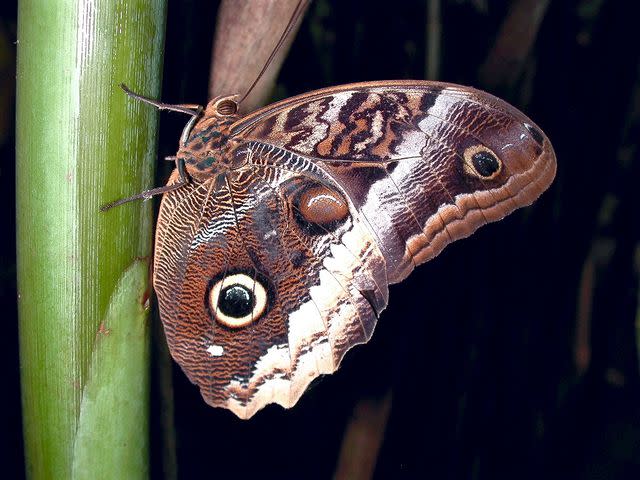
Cecropia Moth Caterpillar
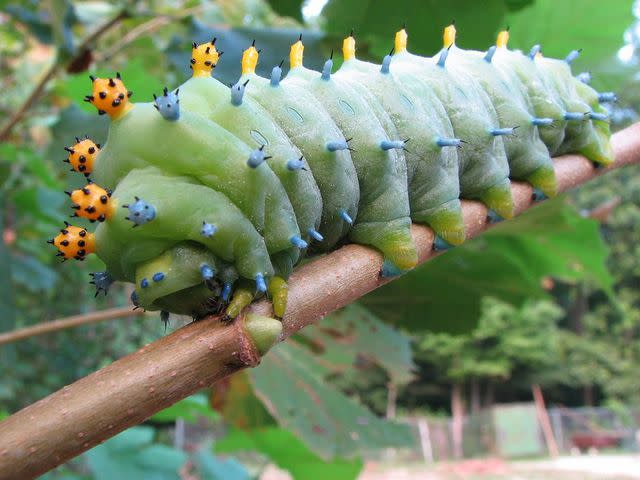
Michael Hodge / Wikimedia Commons / CC BY 2.0
These plump green bruisers, found throughout the U.S. and Canada, grow to be over four inches long. As they pack on weight, they turn from black to bright sea green to iridescent bluish green (like the one pictured here). Most impressive, though, are their many blue, orange, and yellow protuberances (tubercles) wielding black spines. They may look scary, but it's all for show.
Cecropia moth caterpillars don't sting or cause harm to humans. They spend their time eating leaves all summer long before they make themselves a cocoon to spend the winter. When caterpillars first hatch, they are black, but with successive molts they turn yellow and eventually green. Come spring, they morph into North America's largest moth and one of its most spectacular species.
Adult moths, who don't eat at all, sport reddish-orange bodies and brown wings marked with bands of orange, tan, and white, with white crescent-shaped marks and eye spots.
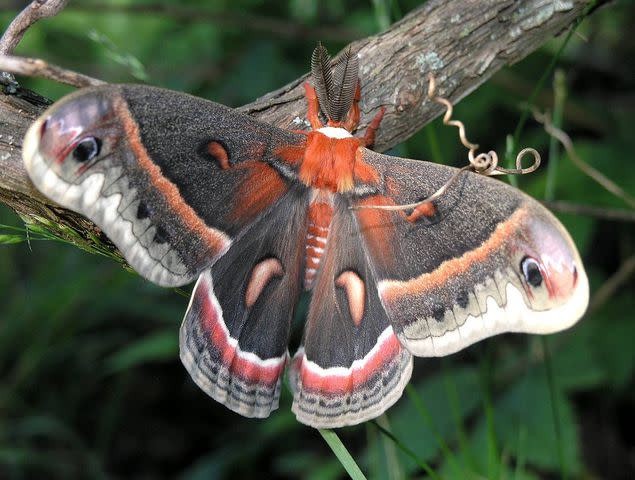
Cairns Birdwing Butterfly Caterpillar
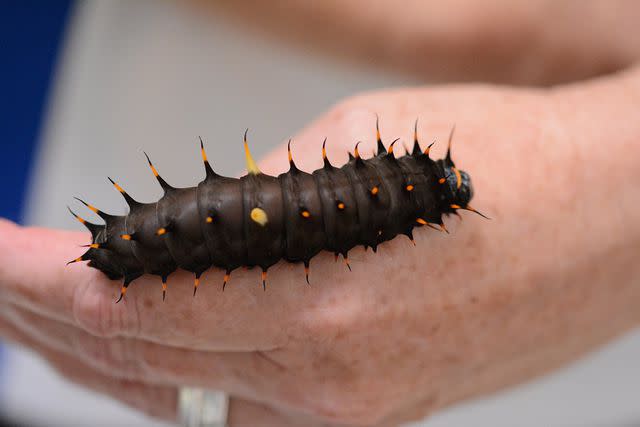
Clint Budd / Flickr / CC BY 2.0
These spiky natives of northeastern Australia begin their life on the leaves of a rainforest vine called Aristolochia. Though the vine is poisonous to other caterpillars—and people—Cairns birdwing caterpillars thrive on it. In fact, they store the ingested toxins in the fleshy orange, yellow, and red spines on their backs as a deadly defense against predators. The color of the spines is sufficient to deter hungry birds from scooping them up.
The butterflies they become (Australia's largest) are equally striking, particularly the vibrant, multicolored males.
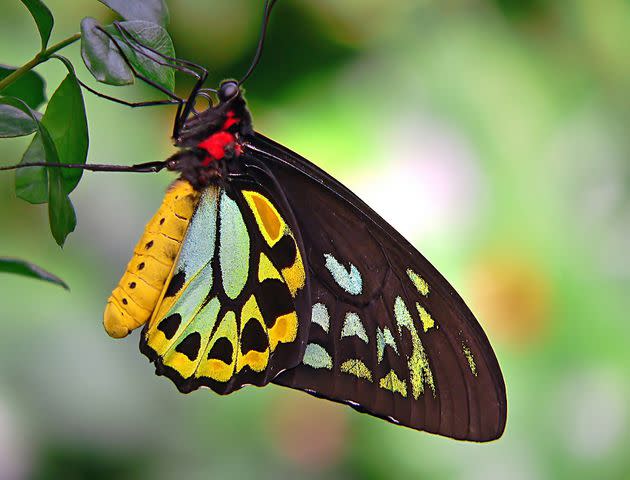
Hag Moth (Monkey Slug) Caterpillar
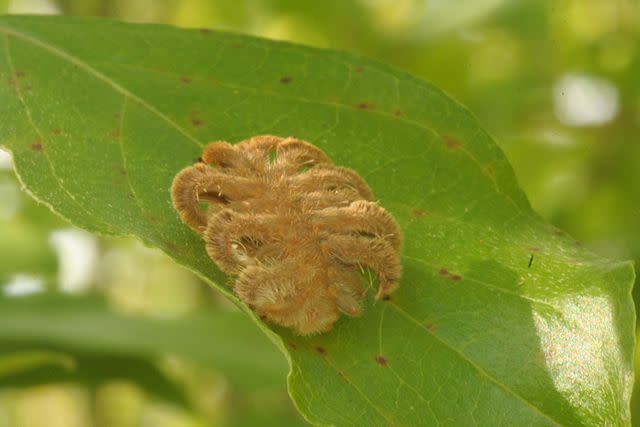
Greg Dwyer / Wikimedia Commons / CC BY-SA 2.5
At first glance, you might mistake the hag moth caterpillar for a hairy spider. More commonly known as a monkey slug caterpillar, this creature is in a realm all its own. It really doesn't resemble any other caterpillar with its flattened hairy brown body, six pairs of curly, tentacle-like legs (three short and three long), and hairy protuberances sprouting from its head. Those hairs sting, causing irritation and an allergic reaction, particularly in sensitive people.
Curiously, when this caterpillar makes its cocoon, its appendages are transferred to the outside of the cocoon to give it protection and camouflage. This bizarre-looking caterpillar transforms into the decidedly less bizarre and innocuous hag moth with its small hairy body and pale tufts on its legs.
